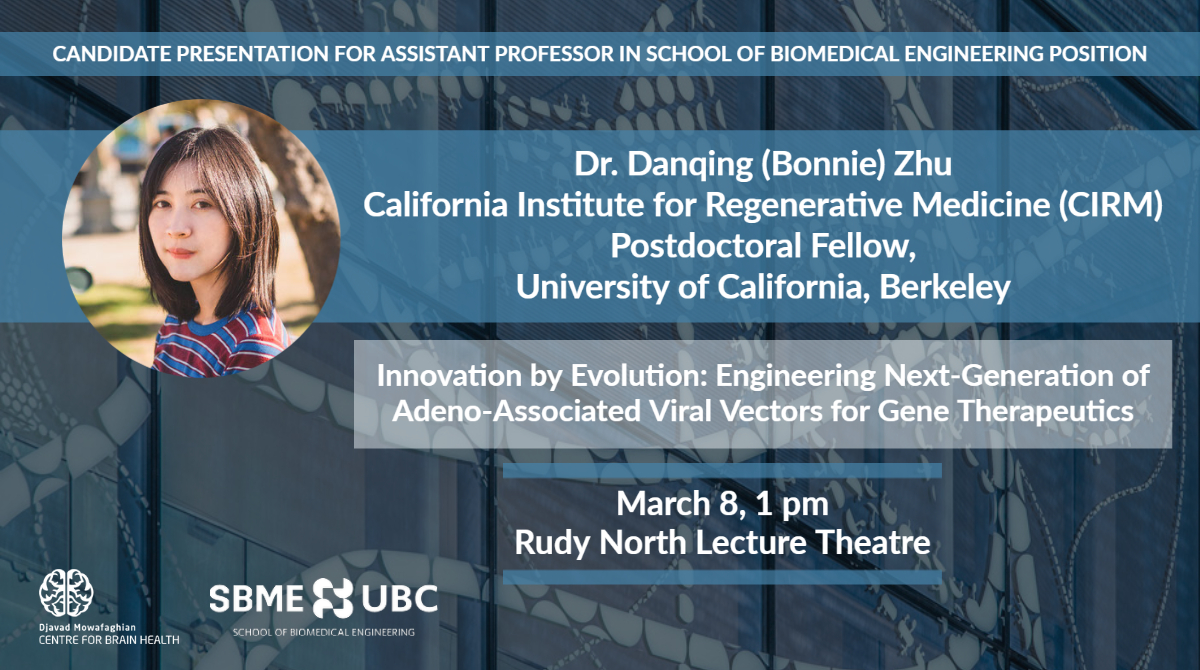
- This event has passed.

Gene therapy, the delivery of genetic material to the cells of a patient for therapeutic benefit, has been increasingly successful over the past decade. The most successful gene delivery vectors are based on adeno-associated viruses (AAV), a naturally derived protein-based and self-assembled ‘nanoparticle’. Although these natural ‘nanoparticles’ are safe and non-pathogenic, they present several barriers that limit their efficacy in delivery as they were not evolved by nature for human therapeutic applications. Directed evolution, a strategy involves the iterative genetic diversification of a molecule to create a gene pool and functional selection to isolate variants with optimal properties, has thereby emerged as a powerful approach for re-evolving AAVs of novel and improved functions. In parallel, recent advances in deep sequencing technologies allow millions of sequences to be assayed and used for training supervised machine learning (ML) models for prediction of protein properties. Using the combination of directed evolution and ML-guided design, we have engineered ‘designer’ AAV variants with greatly improved packaging, diversity, and primary human brain infection capabilities. Specifically, we have applied such method for developing AAVs that target a crucial cellular component of the central nervous system (CNS), microglia. As a brain-resident macrophage, microglia unfortunately have been implicated in many neurological diseases, such as Alzheimer’s disease, Parkinson’s disease, Huntington’s disease, and others etc. Therefore, genetically manipulating endogenous microglia is a promising therapeutic approach to counteract disease pathology. The extension of such integration of new technologies will have broad utility in the development of next-generation novel AAVs for therapeutic applications of many neurological diseases in the near future.
Zoom link if unable to attend in person: https://ubc.zoom.us/
Meeting ID: 93332 470044
Passcode: 470044